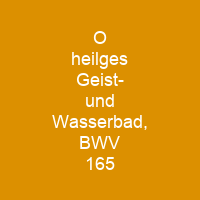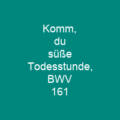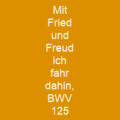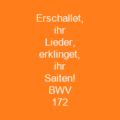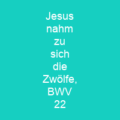O heilges Geist- und Wasserbad is a church cantata by Johann Sebastian Bach. He composed it in Weimar for Trinity Sunday and led the first performance on 16 June 1715. The libretto by the court poet Salomo Franck is based on the day’s prescribed gospel reading. It is close in content to the gospel and connects the concept of the Trinity to baptism.
About O heilges Geist- und Wasserbad, BWV 165 in brief

Bach was appointed Konzertmeister of the Weimar Hofkapelle of the co-reigning dukes Wilhelm Ernst and Ernst August of Saxe-Weimar on 2 March 1714. He was promoted to concertmaster a year before and wrote one cantata per month to be performed in the Schlosskirche, the court chapel in the ducal Schloss. Bach composed a sermon in music, especially in the two recitative for the bass voice, and achieved contrasts in expression, and probably another on the Trinity Sunday concluding his first year as Thomaskantor in Leipzig on 4 June 1724. The performance venue on the third tier of the court church, in German called Himmelburg, has been described by Wolff as ‘congenial and intimate’ Bach requested a strong continuo section with cello, bassoon and violone in addition to the keyboard instrument in his cantata, as well as the organ part, which was played by Bach’s students such as Johann Martin Schubart and Johann Caspar Vogler.
You want to know more about O heilges Geist- und Wasserbad, BWV 165?
This page is based on the article O heilges Geist- und Wasserbad, BWV 165 published in Wikipedia (as of Dec. 05, 2020) and was automatically summarized using artificial intelligence.
